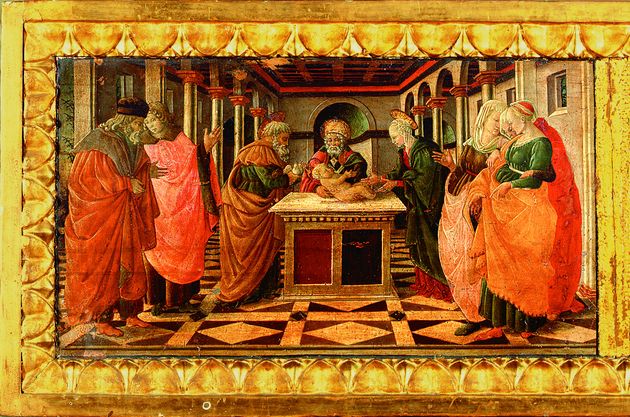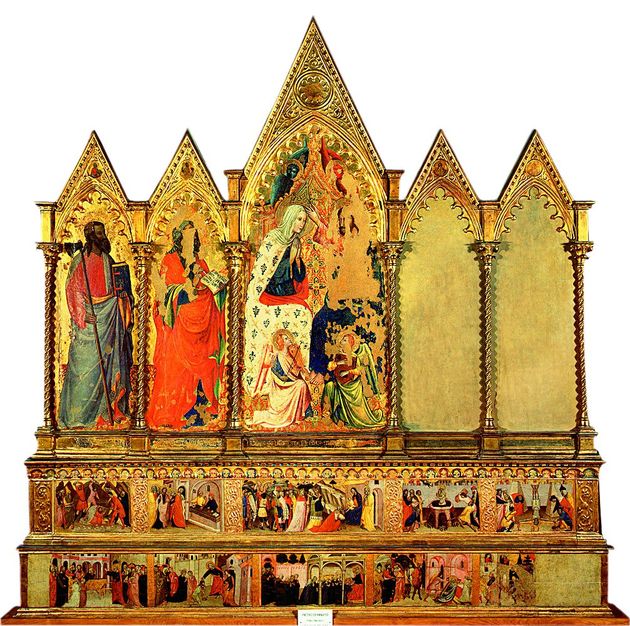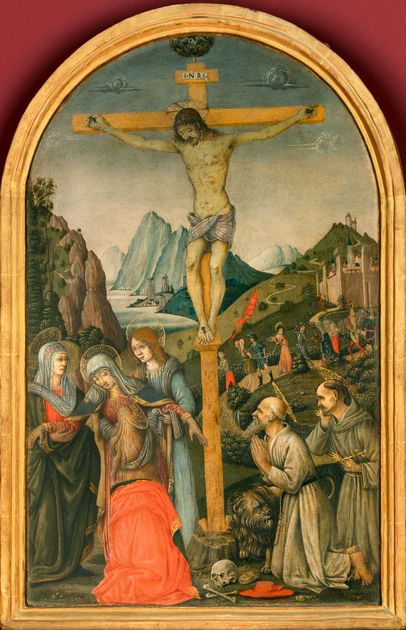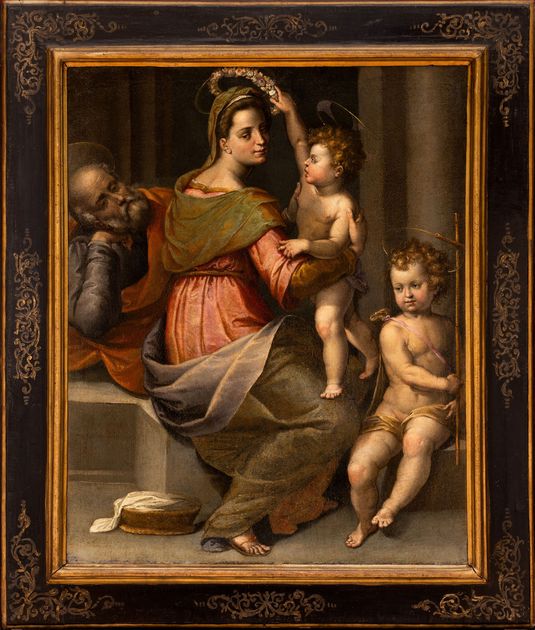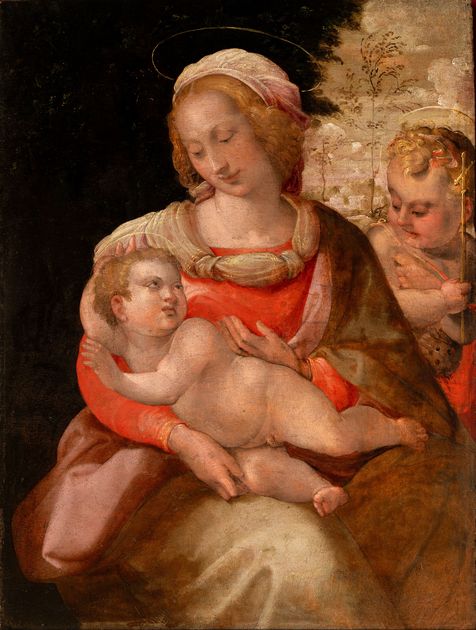The terracotta relief, which is monumental despite its relatively small size, had been attributed to Jacopo della Quercia, Michele da Firenze, a collaborator of Lorenzo Ghiberti, or Ghiberti himself, but had also resemblances with sculptures attributed to the young Brunelleschi for the pronounced dynamism of the forms. The more recent attribution to Donatello, now accepted by critics, is confirmed by the extremely high quality and originality of the shrine. It was modelled by the artist between 1415 and 1420, and a decade later he went on working in Prato carving out the famous outside pulpit of the Cathedral for the ostension of the Holy Belt between 1430 and 1438.
The sculpture proposes a complex, up-to-date architecture in the classical tabernacle shrine form, which resembles other works by Donatello (see the niche for the Guelf Party in Orsanmichele in Florence), and also other artworks by Ghiberti. Here the precious background contains the figures without imprisoning them; they emerge dynamically, throbbing with life due to the confident rapidity and mastery of the modelling. This hints at the energetic volumes of the angels, who with their flowing drapery look like theatrical side-screens flanking the regal and imposing central group.
The architectural vocabulary here used by Donatello is based on Roman precedents that were changing the Florentine cityscape: a conch-shell exedra, fluted pilasters, capitals that remind us to the classical Corinthian order.










